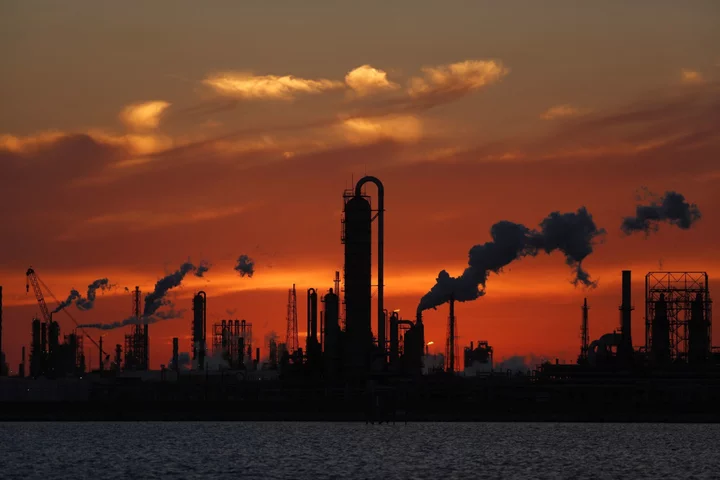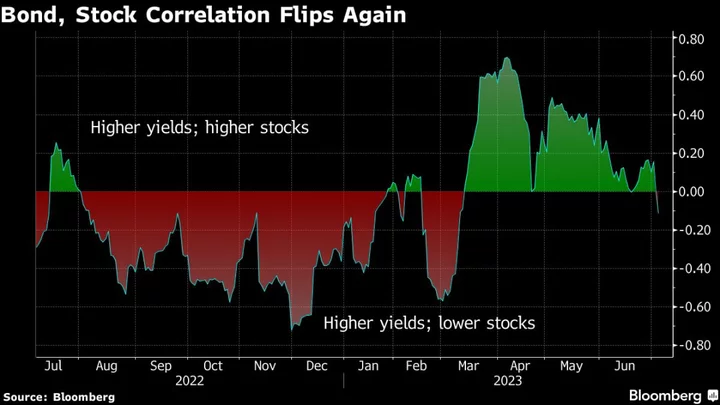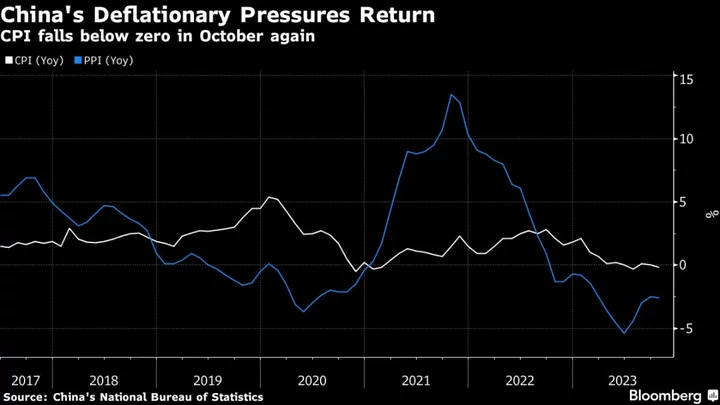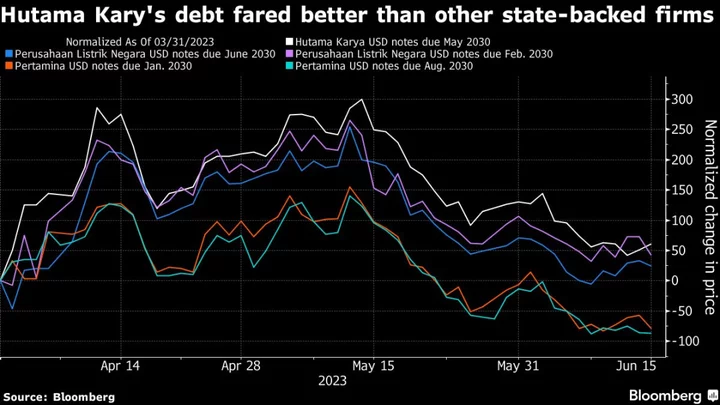Exxon Mobil Corp. and Chevron Corp. spent recent days telling investors why they want to spend $114 billion combined on two megadeals. On Friday, their earnings reports revealed why they need to.
Exxon’s oil production is hovering near the lowest level since its merger with Mobil Corp. more than two decades ago. Chevron disclosed headwinds for key growth projects in Kazakhstan and the Permian Basin in West Texas and New Mexico.
In short, the days of easy oil production growth are over.
The market reaction was swift and brutal. Chevron plunged nearly 7% and Exxon closed 1.9% lower, even as oil prices gained on heightened tensions in the Middle East. For veteran shale oil financier Dan Pickering, the response of shareholders reveals concerns about the fossil-fuel business, especially when compared with other sectors like tech.
“Welcome to the oil patch,” said Pickering, the founder of Houston-based Pickering Energy Partners. Investors “don’t believe this business can be sustainable, they don’t believe the discipline of these companies. They’d rather stare at Amazon today, or maybe any day.”
Unlike their European rivals, Exxon and Chevron have invested heavily in fossil fuels through the ESG boom of the last four years. Even so, new crude supplies have been hard to come by. Out at sea, exploration is expensive and unpredictable. US shale fields are experiencing declining production growth as the best acreage has been already fracked.
Both companies made their recent acquisitions from a position of strength compared to where they were during the height of the pandemic. A jump in energy prices last year translated into record profits. Their stock prices surged, handing Exxon and Chevron executives a strong currency with which to buy smaller rivals.
Exxon’s $62 billion purchase of Pioneer Natural Resources Co. announced two weeks ago will make it the dominant producer in the Permian. Chevron said Monday it’s buying Hess Corp. for $52 billion, giving it a stake in one of the world’s largest and fastest growing oil projects in Guyana.
Both deals are all—stock transactions with small takeover premiums, and are the biggest in the oil industry in more than eight years. As such, they threatened to overshadow Exxon and Chevron’s earnings reports. But existing operations didn’t escape scrutiny.
Chevron revealed yet another delay and cost overrun at its $45 billion Tengiz project in Kazakhstan, and that Tengiz’s cash flow will be about $1 billion less than previously forecast when it finally comes online in 2025.
Exxon has a much stronger growth profile, having already established a foothold in Guyana and sold higher-cost assets. But the Texan oil giant’s production averaged just 3.69 million barrels of oil equivalent a day in the third quarter, near a two-decade low, as growth from Guyana and the Permian failed to offset those impact of asset sales, OPEC production curtailments and the natural decline in productivity that affects all oilfields.
To make things worse, Exxon said earnings from chemicals, long seen as a key growth area for Big Oil, collapsed by 70% from the preceding quarter.
“The industry is still recovering from the impact of the pandemic, and the lower levels of capital that have been going in across the industry to offset the depletion that’s been happening,” Exxon Chief Executive Officer Darren Woods said in an interview on Bloomberg TV.
Chevron offered a list of technical problems in the Permian: limits on the production of wastewater, high levels of carbon dioxide in its natural gas, production partners having difficulties fracking. While smaller rivals have complained of similar issues as the Permian expanded into the world’s most biggest shale patch, it’s unusual to hear these kinds of details from an oil giant.
“This is an example of the maturing of the basin,” Pickering said. “What is kind of surprising is that Chevron called it out, because typically they’re a big company and they wouldn’t get that much in the weeds.”
Fixing such problems will likely add to costs. The global oil and gas industry is expected to boost spending about 10% this year to $545 billion, according to JPMorgan Chase & Co., on top of a 34% hike last year. Earlier this week, Halliburton Co. CEO Jeff Miller reminded investors of what has long been one of the industry’s biggest challenges, particularly in shale.
“The reality is you have to do more work in order to stay flat.”
Author: Kevin Crowley, Mitchell Ferman and David Wethe









